 Website:
Randox Laboratories
Website:
Randox Laboratories
Group: Randox
Catalog excerpts

EDUCATIONAL GUIDE Vivalytic MG, MH, UP/UU
Open the catalog to page 1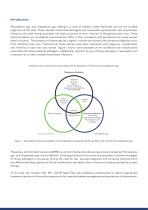
Introduction Mycoplasma spp. and Ureaplasma spp. belong to a class of bacteria called Mollicutes and are the smallest organisms of the class. These sexually transmitted pathogens can cause both asymptomatic and symptomatic infections, the latter being associated with both acute and chronic infection of the genitourinary tract. These bacterial species are considered commensal but shifts in their prevalence and persistence can cause serious health concerns. The prevalence of these species is higher in women who present with symptoms of genitourinary tract infections than men. Furthermore,...
Open the catalog to page 2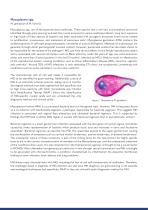
Mycoplasma spp M. genitalium & M. hominis Mycoplasma spp. are of the bacterial class mollicutes. These species lack a cell wall, and therefore cannot be identified through gram-staining1 and lack the crucial enzymes for amino acid biosynthesis2. Long term exposure to high loads of these species of bacteria has been associated with oncogenic processes known to be related to proliferation, invasiveness, and metastasis of cancerous cells2. Mycoplasma genitalium (MG) contains the smallest genome of self-replicating prokaryotes, consisting of around 500 genes. Methods of transmission are...
Open the catalog to page 3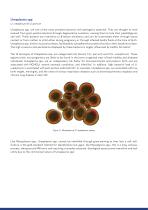
Ureaplasma spp U. urealyticum & U. parvum Ureaplasma spp. are one of the most prevalent bacteria with pathogenic potential. They are thought to have evolved from gram-positive bacteria through degenerative evolution, causing them to lose their peptidoglycan cell wall7. These bacteria are insensitive to β-lactam antibiotics and can be transmitted either through sexual contact or from mother to child either during pregnancy or through infected bodily fluids at the time of birth. Ureaplasma spp. bind to mucosal surfaces, facilitated by cytoadherence proteins found on their bacterial surface....
Open the catalog to page 4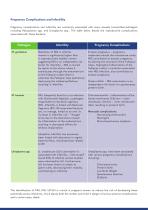
Pregnancy Complications and Infertility Pregnancy complications and infertility are commonly associated with many sexually transmitted pathogens including Mycoplasma spp. and Ureaplasma spp.. The table below details the reproductive complications associated with these bacteria: Pregnancy Complications Detection of MG in infertile women is significantly higher than in reproductively healthy women suggesting MG is an independent risk factor for infertility – MG is carried by sperm to the uterus where it translocates through the endometrium to the Fallopian tubes where it colonises the...
Open the catalog to page 5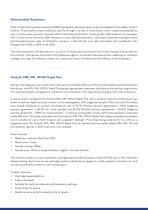
Antimicrobial Resistance Much of the antimicrobial resistance (AMR) displayed by these bacteria can be accredited to their ability to form biofilms. These biofilms block antibiotic activity through a variety of mechanisms which reduce binding affinity and, in some cases, excrete enzymes which break down antibiotics, blocking their effectiveness. For example, MG is known to be more than 80% resistant to macrolide administration. Secondary treatment strategies utilise the fluoroquinolones class of antibiotics, however, in the UK the cure rate associated with moxifloxacin has dropped from 96%...
Open the catalog to page 6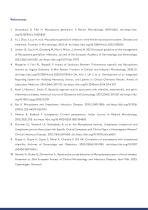
Gnanadurai R, Fifer H. Mycoplasma genitalium: A Review. Microbiology. 2019;166(1). doi:https://doi. org/10.1099/mic.0.000830 2. Yu J, Zhou Y, Luo H, et al. Mycoplasma genitalium infection in the female reproductive system: Diseases and treatment. Frontiers in Microbiology. 2023;14. doi:https://doi.org/10.3389/fmicb.2023.1098276 3. Jensen JS, Cusini M, Gomberg M, Moi H, Wilson J, Unemo M. 2021 European guideline on the management of Mycoplasma genitalium infections. Journal of the European Academy of Dermatology and Venereology. 2022;36(5):641-650. doi:https://doi.org/10.1111/jdv.17972 4....
Open the catalog to page 7
Copyright © 2023 Randox Laboratories Ltd. All rights Reserved. VAT number: GB 151682708. Product availability may vary from country to country. Some products may be for Research Use Only. For more information on product application and availability, please contact your local Randox Representative.
Open the catalog to page 8All Randox Laboratories catalogs and technical brochures
-
LT735 Vivalytic Overview
32 Pages
-
Acusera New Controls
8 Pages
-
Acusera 24.7
24 Pages
-
Acusera Third Party Controls
108 Pages
-
Acusera SMART Controls
12 Pages
-
Company Overview
40 Pages
-
Reagents Brochure
64 Pages
-
sdLDL-C
8 Pages
-
RX SERIES ANALYSER OVERVIEW
24 Pages
-
RX modena
20 Pages
-
RX misano
20 Pages
-
RX Daytona Plus
20 Pages
-
Rx Imola
20 Pages
-
RX Monaco
20 Pages
-
2024 Product List
64 Pages
-
LT107 Evidence Investigator
32 Pages
-
VeraSTAT-V
16 Pages
-
LT033 RIQAS Explained
64 Pages
-
VERASTAT
16 Pages
-
Endocrine Array
4 Pages
-
Cerebral Arrays
4 Pages
-
Thyroid Arrays
4 Pages
-
Respiratory Multiplex Array
8 Pages
-
LT253 Molecular Diagnostics
20 Pages
-
LT367 FH Array Brochure
4 Pages
-
The role of EQA in QC
8 Pages
-
Basic QC Stastics
8 Pages
-
Commutability Guide
4 Pages
-
How to measure uncertainty
8 Pages
-
ISO 15189 Educational Guide
8 Pages
-
Troubleshooting QC Errors
8 Pages
-
Qnostics
52 Pages
-
Adiponectin LT519
28 Pages
-
Specific Proteins
40 Pages
-
Linearity sets
12 Pages
-
Antioxidants
16 Pages
-
Cardiology & Lipid Testing
28 Pages
-
Diabetes Portfolio
28 Pages
-
Total Bile Acids
4 Pages
-
VIVALYTIC
30 Pages
-
RANDOX DISCOVERY
36 Pages
-
HbA1c
2 Pages
-
Preparing QC
1 Pages
-
Point of Care Testing
12 Pages
-
LT394 Using QC Multirules
1 Pages
-
Guide to running QC
1 Pages
-
Tumour Marker Arrays
4 Pages
-
Which QC is the Right QC
8 Pages
-
How often is right for QC
6 Pages
-
Cardiac Risk Multiplex Array
4 Pages
-
LT241 Metabolic Array MAY15
8 Pages
-
KRAS / BRAF / PIK3CA Array*
4 Pages
-
Custom Arrays for Biochip
12 Pages
-
LT169 Cardiac Array
4 Pages
Archived catalogs
-
ACUSERA
108 Pages
-
Evidence Evolution
28 Pages
-
Evidence
16 Pages
-
Metabolic Syndrome Arrays
8 Pages
-
STI Multiplex Array
8 Pages
-
Molecular Testing
16 Pages
-
Evidence Investigator
20 Pages
-
Fertility Array
4 Pages
-
Rx Daytona
16 Pages
-
Evidence Investigator
16 Pages
-
Evidence
16 Pages





















































































